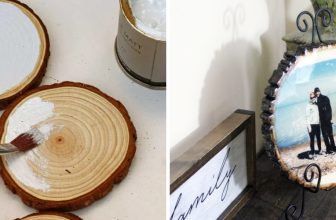How to Make Sash in a Dash
Creating a sash can be a delightful and impactful way to elevate your outfit or add a personal touch to your home decor. Whether you need a stylish accessory for a special occasion or a simple enhancement for everyday wear, making a sash is a quick and rewarding project.

In this guide, we’ll explore the essential materials and step-by-step instructions on how to make sash in a dash, to help you craft a beautiful sash in no time, allowing you to express your creativity and flair.
The Versatility and Popularity of Sashes
Sashes are not only fashionable accessories but also incredibly versatile, making them a popular choice for various occasions and styles. They can be crafted from a wide range of materials, including silk, cotton, or even denim, allowing them to complement any outfit, from formal dresses to casual wear. Sashes can be worn in numerous ways, whether tied around the waist to accentuate curves or draped over the shoulder for a more relaxed look.
Additionally, they are commonly used in events such as weddings, proms, and themed parties, serving both decorative and functional purposes. This adaptability, combined with the ease of customization, explains their enduring appeal in the world of fashion and beyond.
Benefits of Making a Sash Quickly and Easily
Creating a sash quickly and easily offers several advantages that enhance both the crafting experience and the end result. First and foremost, the quick turnaround allows you to accessorize your wardrobe or décor in a timely manner, making it perfect for last-minute events or spontaneous occasions.
Additionally, the ease of the project encourages beginners to explore their creativity without feeling overwhelmed, providing a sense of accomplishment even for those with minimal sewing experience. Quick sash-making also means that you can experiment with different styles, colours, and materials, enabling you to create unique pieces that reflect your personal taste. Ultimately, the ability to make a beautiful sash in a short time fosters a rewarding connection to the crafting process while adding a fashionable element to any outfit or space.

10 Methods How to Make Sash in a Dash
Method 1: Basic Fabric Sash
The simplest method for creating a sash involves using basic fabric and straightforward sewing techniques. Start by selecting your fabric, which could range from silk and satin for a formal look to cotton or denim for a more casual appearance. Measure the length and width of the sash based on your preference—typically, sashes are around 2 to 4 inches wide and long enough to tie comfortably around the waist or shoulders.
Cut your fabric to the desired length, ensuring that you add extra for seam allowances if you’re planning to sew the edges. Fold the fabric in half lengthwise, right sides together, and sew along the long edge using a 1/4-inch seam allowance. Turn the sash right side out and press it flat. Finish the ends by folding them in and sewing them closed. This basic method is quick, requires minimal materials, and results in a clean, classic sash.
Method 2: No-Sew Fabric Sash
For a no-sew option, you can use fabric glue or fusible bonding tape. Begin by choosing a fabric that doesn’t fray easily, such as felt or fleece. Cut the fabric to the desired length and width of your sash. Instead of sewing, use fabric glue to secure the edges. Apply a thin line of glue along the raw edges and fold them in, pressing firmly to ensure they adhere properly.
Alternatively, you can use fusible bonding tape. Place the tape between the fabric layers and press with an iron set to the appropriate temperature for the fabric. This method is ideal for those who lack sewing skills or prefer a quicker, no-mess approach. It results in a polished sash without the need for needle and thread.

Method 3: Ribbon Sash
Using ribbon to create a sash is a swift and elegant method. Select a ribbon in your preferred color and width. Measure out the length of ribbon needed to wrap comfortably around your waist or shoulders, adding a bit extra for tying. Simply trim the ribbon to the desired length.
To prevent fraying, heat-seal the cut edges by gently running them over a flame or using a fray check solution. You can also add embellishments, such as small bows or decorative pins, for a touch of glamour. Ribbon sashes are perfect for quick projects and can be customized easily with different ribbon types and colors.
Method 4: Beaded or Sequined Sash
For a sash with added sparkle and glamour, consider incorporating beads or sequins. Start by selecting a base fabric like satin or velvet and cutting it to the desired size. Using a needle and thread, sew on beads or sequins in your chosen pattern or design. You can create a fully embellished sash or add accents along the edges or at intervals.
If you prefer a more time-efficient approach, you can use beaded trim or sequined ribbon. Simply sew or glue the trim onto your sash base fabric. This method adds an elegant touch and makes your sash stand out at any formal event or celebration.
Method 5: Elastic Sash
An elastic sash offers flexibility and comfort, making it ideal for dynamic activities or outfits. Start by measuring a length of elastic band that will comfortably fit around your waist or desired area. Cut the elastic to size, ensuring a snug but comfortable fit.
Cover the elastic with fabric by sewing or gluing a fabric strip over it. You can use a coordinating or contrasting fabric, depending on your design preference. For a seamless look, encase the elastic within the fabric, leaving no raw edges exposed. Elastic sashes are versatile and can be easily adjusted to fit different sizes.
Method 6: Reversible Sash
A reversible sash provides two distinct looks in one accessory. Choose two complementary fabrics or patterns. Cut two pieces of fabric to the same size, ensuring they are slightly larger than the finished sash size to account for seam allowances.

Place the fabrics right sides together and sew around the edges, leaving a small opening for turning. Turn the sash right side out, press it flat, and stitch the opening closed. You now have a sash that can be worn with either side showing, offering versatility and style.
Method 7: Custom Printed Sash
Creating a custom printed sash involves using fabric with a personalized design. Start by choosing a fabric suitable for printing, such as cotton or polyester. Use fabric paint or a fabric marker to create your design, or opt for custom-printed fabric from a specialty service.
Once the design is dry, cut the fabric to the desired sash size and finish the edges as needed. Custom printed sashes are perfect for events like weddings, birthdays, or themed parties, where a personalized touch adds significance and flair.
Method 8: Pleated Sash
A pleated sash adds texture and dimension to your accessory. Choose a fabric that holds pleats well, such as taffeta or polyester. Measure and cut the fabric to the desired length and width. Fold the fabric into even pleats, pinning them in place as you go.
Sew along the top edge of the pleats to secure them, then trim any excess fabric. This method requires a bit more time and precision but results in a beautifully textured sash that adds a sophisticated touch to any outfit.
Method 9: Braided Sash
A braided sash offers a unique and textured look. Begin by cutting three strips of fabric, ribbon, or cord to equal lengths. Braid the strips together, securing the ends with a knot or sewing them in place. Adjust the braid to ensure it is evenly spaced and consistent.

Once braided, measure the sash around your waist or desired area and trim any excess. You can add embellishments or accessories to the braid for added style. Braided sashes are great for adding a bohemian or rustic touch to your outfit.
Method 10: Tulle Sash
For a light and airy sash, tulle is an excellent choice. Cut a length of tulle to your desired size, allowing for extra length if you want to create a bow or trailing ends. Tulle is a delicate fabric, so handle it gently to avoid snagging or tearing.
Gather the tulle at the center and tie it around your waist or desired area. You can create a bow by tying the ends of the tulle or adding embellishments like faux flowers or rhinestones. Tulle sashes are perfect for adding a whimsical or romantic touch to dresses and formal wear.
Conclusion
Creating a sash can be a fun and rewarding project that allows for personal expression and creativity. Whether you choose a simple ribbon sash, a glamorous beaded design, or an elegant reversible piece, there are countless ways to customise your accessory to suit your style and occasion. The versatility of these techniques ensures that you can find the perfect sash for any event, from casual gatherings to formal celebrations. Thanks for reading, and we hope this has given you some inspiration on how to make sash in a dash!




